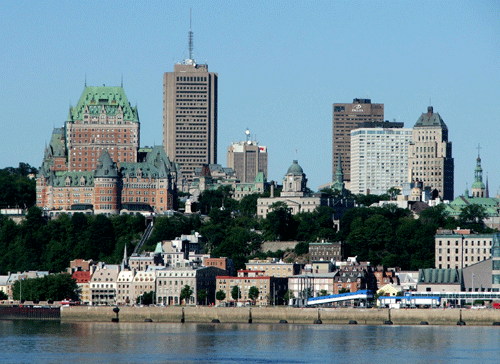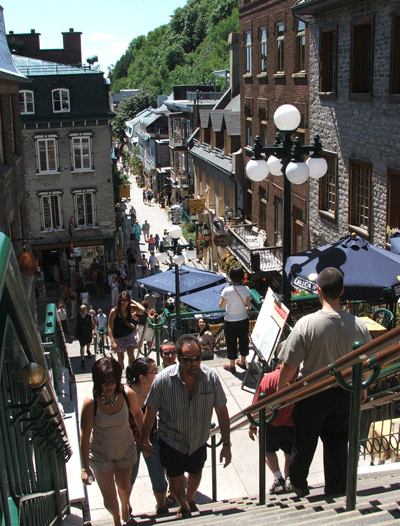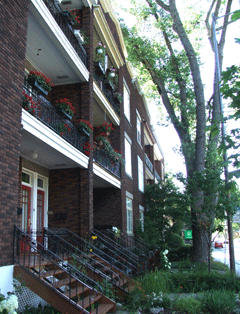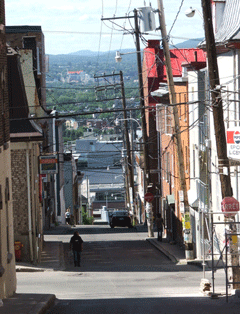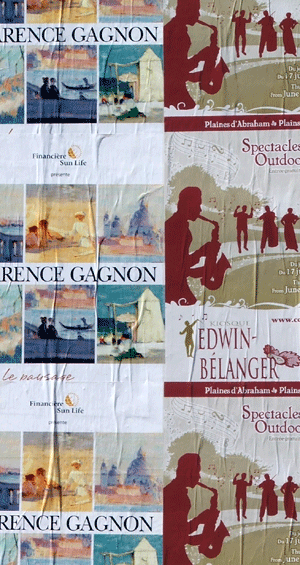Past the roller-loop, I found myself at the Quebec Museum of Fine Arts. Earlier in the day I’d passed a wall plastered with an array of posters, including one for what looked like a lovely exhibit of landscapes in snow. So when it turned out that this was the late evening and the museum would be open for another few hours, I bought a ticket and went inside.
It was a delight. The exhibit was devoted to one Clarence Gagnon, an early 20th century painter who worked in Charlevoix and the Laurentian Mountains, the region on the north side of the St. Lawrence downstream from Quebec. I was floored by his paintings. They were just wonderful. He really liked winter, and even then – in pre-automobile 1910 or thereabouts – he romanticized the small villages of the regions and sought to portray the “good old days.” I loved the snow. His scenes are buried in it, small houses surrounded by huge drifts, gray skies, horses pulling sleds, wisps of smoke drifting out of chimneys to suggest the warmth inside. Yes, yes, I know that his paintings made it all far more enchanting than I would find it had I really to spend the winter in the bitter cold of Charlevoix. But thank goodness I don’t have to spend the winter there, and I do find the imagery delightful. I even bought the exhibition catalog, a great big hardbound book that I’ll have to find space for in the van somehow.
Next morning I stuck to my determination to get onto my skates. Ignoring my fears, I headed out on another wonderfully manicured trail - this one shared with bikes and runners - along the south shore opposite the city. To my surprise, I can skate! It’s nothing like as easy as riding a bike, but it did come back to me. And after the first couple of curb cuts, I could even glide slowly over them, braving their little bumps without stumbling or falling into the street. I put on ten miles or so, and it was delightful. The last stretch was a long gradual downhill, and I soared along, the wind in my face, my hair flying behind me, almost the way I sometimes do in my dreams. It was the best part of being in Quebec, by far.
Continue to the next entry.
Return home.
Unless otherwise indicated, all text
and photos on this site © Joy E. Hecht.
